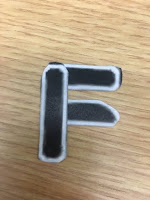Today's lecture related to the concertina sketchbook and themes from the brief. We first explored how to practice different techniques and ideas to help the development of creating new designs. There are plenty of other ways to start the development of a design such as:
Thumbnailing - a process to help plan for a design task, it encourages you to develop multiple solutions for an idea and consider the decisions
Morph Sheet - this is a single core idea that morphs into as many other different ideas as you can think of - having a central idea and creating multiple impressions of it. This is typically used more in Product Design to help create more developed ideas from one
Storyboard - following a linear narrative and creating the storyboard to help visualise the narrative
Maquettes - are models that describe the narrative to the body of work - they are easily moveable and adjustable
Drawing Process - thinking whilst drawing and creating a collection of ideas that super impose themselves. The sketchbook is an archive of thinking, ideas that solve problems. Thinking about themese without having to worry about the final form
We also discussed a theme within the brief, a system of objects. Within this, we explored typology and taxonomy.
Typology
' a classification according to general type, especially in archaeology, psychology, or the social sciences. '
Typology is a study of material and form - they are viewed as objects and collections feel like catalogues
Berndt and Hila Becher were German conceptual artists and photographers working as a collaborative duo in the 70's, 80's and early 90's. The work shows how grids are important in design, that archives are/should be symmetrical, there should be a consistent lighting and scale shown through the photographs. The archive is democratic and everything is presented in the same way, an objective matter.
Idris Khan is a British artist based in London. His work is created by using a collection of images (similar to that of Berndt and Becher) to super impose them together and create a 'ghost like' image, it also shows how consistent all the seperate images.
Karl Blossfeldt was a German photographer, sculpter, teacher and artist but was well known for his photographs of plants. He thinks about scale and lighting to create the consistency in his work. Using strong shapes, patterns, textures and multiple viewpoints/angles so that we see all sides of the plant in great detail.
Juan Fontcuberta (flora) is a conceptual artist who uses plain backgrounds, consistent lighting to create his monochrome images of plants. He uses Blossfeldt's work to create a new meaning by incorporating other plants and animals. As a collection Fontcuberta creates an image of an imaginary world
Donovan Wylie is an Irish photographer. His photographs of the watch towers in Northern Island show how the camera is posistioned at eye level for every image. The consistent aspects of the scene link back to the Becher's.
Taxonomy
'the branch of science concerned with classification, especially of organisms; systematics'
Eadweard Muybridge was an English photographer, best known for capturing motion through still images. He focussed on animal movement as humans were considered to be animals. 'Horse in Motion' is a series of images which proved that whilst a horse was galloping it left the ground. Muybridge also looked at the human form from multiple viewpoints, the way humans and animals move - within that there are multiple typology's which then become the taxonomy.
Neubau Welt Archive is a catalogue of objects. It is an attempt to describe the objects that he has encountered in his world, the objects tend to be things that we consume, they are all types, indexed and catagorised in the archive. Everything has a unique number so that it is easier to find. The archive is commercial as well as describing the world he imagines.
Walter Benjamin was a German philosopher who created The Arcades Project, an archive of fragments rather than a taxonomy or typology. Benjamin collected narrative fragments, writings, objects and quoted them to create the same design/layout as a book. He was drawing with language and drew in an imaginary place with a complex mixture of fragments - described as mythology.
Objects can be collected as types, described visually, described through language. Core idea about objects is about consumption.
Reading - The system of objects - New York Verso 2005
The Arcades project - New Edition, Cambridge
Neubau welt - Berlin
Keywords: Material, Form, Taxonomy, Typology, Archive - use these to explore concepts wandering through, and in space. Document experience using drawings, photos and texts.




































